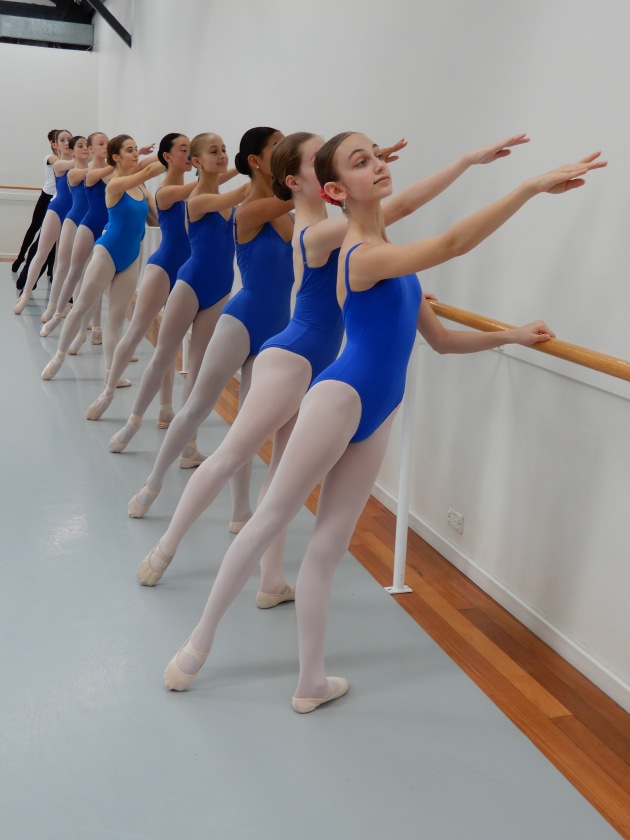Discipline in today's dance class
Michell Dursun examines how and why discipline still matters.
Are students’ attentions spans getting shorter? Are politeness and courtesy outdated concepts? Just how do teachers compete with digital distractions in a class?
These are just some of the questions swirling around the complex issue of discipline in the dance studio. For dance teachers, expectations in terms of creating an encouraging, positive and above all, a safe environment for young dancers, can sometimes clash with the requirements to set firm rules and expectations in terms of behaviour and conduct.
Contemporary guidelines promoting Safe and Effective Dance Teaching Practices (Ausdance) mean that the days which many older dancers recall, of students cowering in fear of an unyielding, exacting and terrifying teacher, have thankfully, been relegated to history.
Yet, for dance teachers, the challenges of managing behaviour in a modern dance studio remain. On a daily basis, teachers are bumping up against issues to do with student focus and conduct, both in class and with the new frontier -- the online environment.
Many argue that discipline is one of the most important traits of a dancer. This discipline takes a couple of forms and includes the self-discipline required by a dancer to manage their fitness, health and body, as well as the observance of standards of etiquette and decorum which have long been the expectation of dance classes. Discipline in the studio is also tightly entwined with safe dance practices and good classroom management.
Discipline of the past
The origins of discipline in dance, particularly the structure and etiquette of a class, are linked to balletic traditions that go to the 15th century. The courts of Renaissance Italy and France, where ballet originated, were bastions of gallantry and gentility and it was against this background that dance evolved.
So, if the foundations of dance discipline date back 500 years, the question can be asked, is discipline still necessary in 2020 or is it just an old fashioned concept? Susan Anderssen, Executive Director of The Conlan College in Sydney, says discipline is as important today as it ever was and is an essential component of learning to be a not only a good dancer, but a good human being.
“The meaning of discipline is not to punish,” she says, “it means ‘to teach’. She explains that at her school teachers take seriously the opportunity to teach all students not only ballet “but important life lessons such as being able to acknowledge and self-correct behaviour that distracts others, learning to be a part of a team, understanding that difficult goals take time and effort to attain”.
There are a range of reasons why discipline is as important in the dance studio today as it was for past generations.
Discipline for learning
For dance studio owners, the responsibility of providing an environment that is conducive to learning lies at the centre of this issue. Hilary Kaplan and Archibald McKenzie of Alegria Dance Studios in Sydney explain that “discipline is crucial in a dance studio if the teacher and students are expecting positive outcomes”. They say: “If students are not working in a sincere and focused way, it is impossible to achieve”.
Students who are not taking their training seriously or are messing around in class disrupt and impede the learning of others. Teachers must work to create an environment where distractions are managed and where focus and hard work are rewarded. As Anderssen says of her dancers, “Their parents are paying us fees for them to learn and are supportive of our efforts to create a culture which is nurturing and encouraging, with clear expectations about behaviour”.

Discipline in appearance
Expectations around class attire and dress standards are not only important for the teacher to be able to see the form and musculature of the students’ bodies, they also help to instil one of the key lessons of becoming a dancer –- professionalism.
Complying with standards of appearance and grooming is an expectation of pre-professional schools and companies all around the world. They are also important as a part of a dancer’s physical and mental preparation for class and to ensure they can move freely and partner safely with other dancers. Furthermore, good grooming prepares them for dressing for stage and its requirement of neat hair, headdresses, clean shoes, and so on.
Discipline with technology
Technology, in particular the use of mobile phones, is another issue that studio owners need to consider. It is common practice for most studios to ban mobile phones from the dance studio so that teachers are not in a position where they have to fight for the student’s attention. In some schools, however, concerns around the safety of students have seen these bans extend to dressing rooms and toilets.
Kaplan and McKenzie say that the widespread use of technology is creating another headache for educators. They explain that with technology affording many students instant gratification, “the result is that they do not want to constantly repeat a movement or exercise in order to attempt to perfect it. They become bored and then become disruptive which spoils it for the others”.
Respect for authority and others
In many spheres, but particularly in dance, there is a culture of acknowledging and paying homage to those who have gone before. This sensibility is demonstrated, in part, through showing respect to elders. In a practical sense, this includes paying attention to the teacher, following instructions and observing behaviour standards. It can help, Anderssen says, to have these positive behaviours modelled by teachers and senior students so that younger students learn by example.
In addition to showing respect for teachers, dance students have to be mindful of their own behaviour in relation to the other students in their class. Kaplan and McKenzie say it is important for students to learn to manage their behaviour and, “respect their peers, who are keen to focus on the task at hand”.
This article was first published in the April/May 2020 of Dance Australia.



